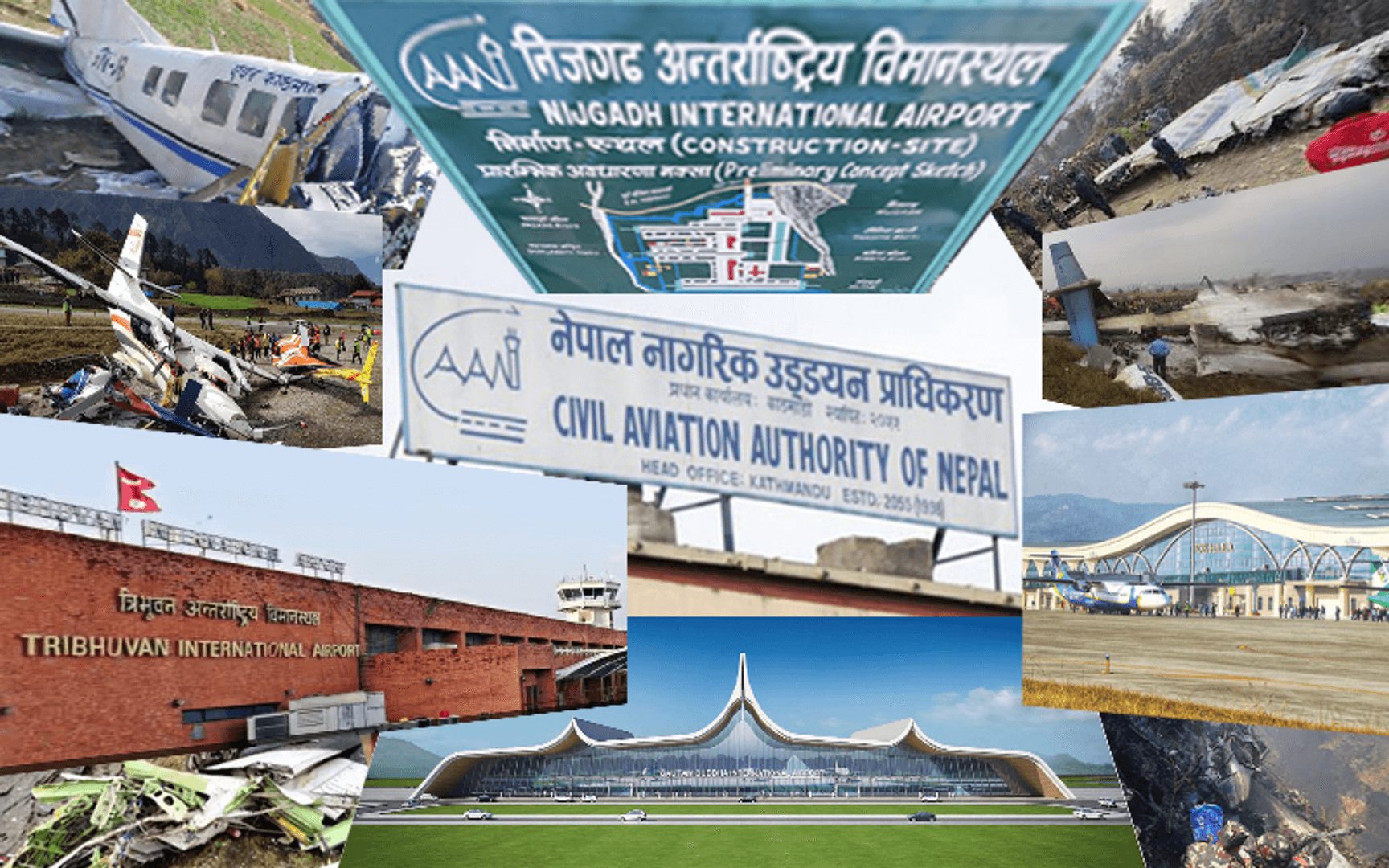Flying above the Himalayas

The first plane that attempted to land in Nepal did not succeed; the plane sadly crashed, marking the notoriety of Nepali aerospace. But planes have played a significant role in the Nepali political and social transformation.
In May of 1946, a Royal Air Force plane crashed in Simra, located near the Indian border. There is a chance that the British security agencies may have used Nepali soil for landing purposes, and this was revealed after the accident.
Then, in 1947, “a lone pilot landed his ‘gilder’ on the old golf course in Kathmandu; the location near the landing would become the very first airport in Nepal.
At that time, Nepal had only established bilateral relations with the United Kingdom, the USA, and India. Nepal was an isolationist country ruled by an autocratic regime; The Rana’s.
The Rana family was divided into classes; A, B, and C, with C-class Rana being struck out from the ‘roll of succession’. One such C-class Rana, Mahabir Shamsher, shifted to Calcutta where he operated an air service called Himalaya Aviation.
Around 1949, a Himalayan Aviation aircraft flew over Birgung and Kathmandu, dropping anti-Rana leaflets. The aircraft from Himalaya Aviation was also used to smuggle arms and ammunition from Burma into India, which was then utilized in Nepal to instigate a civil war against the Ranas.
Interestingly, the revolutionaries in Nepal were technologically advanced; they not only used aircraft but also used radio to spread awareness against the Rana regime, while the traditionalist Rana lacked such infrastructure.
In 1949, Indian Ambassador Sarjit Singh Mahathia landed in Gauchar; this marked the first historical landing of an airplane in Kathmandu, and Gauchar continued to be used as an airport.
Himalayan Aviation Dakota DC-3 operated a chartered flight on February 20, 1950, from Gauchar to Calcutta, followed by three weekly flights between Patna and Kathmandu.
Gauchar remained the center of many historical incidents. One was that of King Tribhuvan, who flew from Kathmandu to Delhi in 1950, weakening the Rana regime. He finally flew back in early 1951, marking the demise of the Rana regime.
At a time when Nepal did not even have an official radio station, the physical presence of the King returning to the country with a plane, would have been a memorable event.
The historical Gauchar landing strip was finally inaugurated as Tribhuvan Airport in 1955, and the airstrip initially grassy, was later paved in 1957.
Nepal in the 1950s and 1960s was a country without roads, and a grassy runway was considered sufficient for aircraft landings. This setup, allowed Nepal to build various airways, which later were not used since different regions of Nepal became connected by highways.
In 1971, the Lukla Airport (now known as Tenzing Hillary Airport) was constructed, earning the reputation of being the world’s most extreme airport due to its unpredictable weather, short runway, and uneven topography.
Nepal’s airports have not only gained notoriety for the number of accidents but also for an incident in 1999 when an Air India plane was hijacked and taken to Kandahar, Afghanistan. The flight was destined to fly to Delhi from Kathmandu but was taken over by terrorists.
In 2013, the European Commission (EC) imposed a ban on Nepali Airlines entering European airspace after eight British nationals were killed in a Sita Air plane Crash in 2012. The European Commission insisted that the Civil Aviation Authority of Nepal (CAAN) be split into separate bodies, one as a service provider and another acting as a regulator. Unfortunately, there has been a lack of necessary political will for such action.
There remains a history of constructing airports under political pressure, built solely for electoral politics and later abandoned.
Today, Nepal has 55 domestic airports, but only 32 are in operation. The distance between these airports ranges between 1 to 3 hours of driving in some districts, and it may cost less than three times to drive to the location than to fly.
As for international airports, the question is whether Nepal even needs a fourth international airport, while the previous two newly constructed airports are still suffering losses, to the extent that some media outlets in Nepal named the Pokhara International Airport a debt trap.
Nepal has a rigid topography, further challenged by unstable politics.
The country is known for attracting a vibrant international trekking community and continues to be a lively tourist hub, however, it is a known fact, that Nepal must modernize its aerospace institutions and improve its infrastructure.
Author
Kripendra Amatya, Researcher, Nepa~laya Productions
Editor
Kripendra Amatya, Researcher, Nepa~laya Productions
Published Date
January 1, 1970



